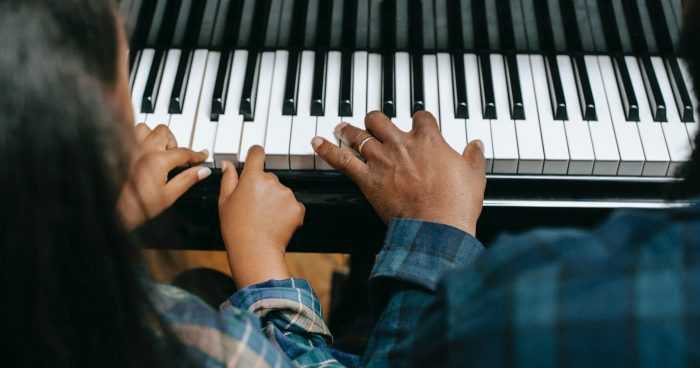Communication and Love – Historical-Literary Perspectives
The joke across campus of the University of Arizona, where I am teaching, is that I am teaching ‘Sex in the Middle Ages.’ Well, that’s what most of my colleagues like to think because they probably have nothing else in their mind when it comes to gender relationships among adults, sex. This does not come as a surprise, I think, because we observe increasingly in our modern society the collapse of the institution of marriage, and hence also the collapse of constructive, solid, and enduring relationships, that means, the loss of the erotic, hence of love. In short, people confuse love with sex, which amounts to the commodification of some of the fundamental human feelings, hence their alienation.
Whatever all that might imply, I am not teaching ‘Sex,’ neither in its historical nor in its modern context, as much as I am a scholar of sex in the Middle Ages, having published (a) two (b) books and a handful of articles. However, sometimes I think I should do just that because good sex requires a profound understanding and respect of the sexual partner, particularly because this does not come easily, not even in the best partnerships, within marriage or outside. In fact, we are really fooling ourselves in pretending that sex is a simple biological act which all people somehow know how to handle automatically. By contrast, both sex and love are some of the most difficult aspects in human life, both past and present, and yet we normally assume that young adults should be allowed simply to jump into it, without any preparation, education, and training.
How strange, whenever we want to operate a car, a boat, a plane, or any kind of major machinery (a crane, a concrete mixer, etc.), we are required to get a license first which documents that we have studied the matter carefully and thoroughly and are competent enough to handle the task. But when it comes to love and sex, all precautions fly out of the window, so no wonder that a fairly high percentage of people unfortunately fails in marriage or any kind of partnership, as documented by the large number of divorces, at least in the United States. While my colleagues joke about my course claiming that it deals only with ‘Sex in the Middle Ages,’ I tend to turn this joke around and encourage them to take my course, Eroticism and Love in the Middle Ages, before they would even dare to think about forming a partnership or to enter into marriage. Oh yes, I mean that, first study the history of courtly love in the pre-modern world, and thus gain the basic insights into the fundamentals of all human relationships, and then figure out for yourself how this might work out for yourself today. I am happy to open my doors, but you must be officially registered as a student.
I find it hilarious how much my students, and probably their friends and family, shrink back from the term, ‘Eroticism,’ and express real discomfort talking openly about the essential glue that bonds people together. How embarrassing taking a General Education course with this title, ‘Eroticism and Love in the Middle Ages’! Nevertheless, the erotic is a most amazing force connecting people throughout time and all over the world across all gender, race, culture, religious, and language barriers. In the western, post-antique world, the power of eroticism was rediscovered not until the early twelfth century (troubadours, trouvères, Minnesang, il dolce stil nuovo), and it then exploded all over Europe at least within the courtly spheres, and it has influenced us until today, virtually at all social levels. Whether we think of Shakespeare or Goethe, of Jane Austin or Thomas Mann, the issues of the erotic and love have deeply influenced all people and have dominated the public discourse. Mutatis mutandis, the same applies most likely to the other global cultures. Instinctively, we all acknowledge the crucial importance of both forces, but who would accept the notion that the erotic and love must be studied first before you dare practicing them, or falling into them. Even basic swimming requires lessons. Then why not study love theoretically as early as possible, that is, a world consisting of a mighty sea where even the smallest waves might smash and drown you if you are not prepared, but where you can cover huge distances and have the most glorious experiences when you are experienced in sailing, so to speak.
Of course, the presence of this discourse has not guaranteed at all a growth in awareness and understanding of eroticism and love. But this would certainly not be the fault of the various authors or poets from throughout time, who have made huge efforts to address these issues in all of their critical dimensions, especially because there has always been the dark side as well, with sexual violence, hatred, misunderstanding, rejection, and disagreements, ultimately divorce, if not criminal actions, as I have discussed in yet another book of mine.
To return to my previous metaphor, it does not matter how many manuals there are serving to train future machinists or drivers; what matters is that those apprentices actually study those manuals, discuss the critical issues, learn the intricacies, and then pass a test with which they can confirm their competence. I do not want to fly a plane when the captain is not fully trained and fully licensed. However, when it comes to matters of love, the opposite often, if not almost always, seems to be the case. So, let us revisit to the origin of the literary discourse on love, as it emerged in the high Middle Ages, and get involved in love both in critical and theoretical terms. The study of the past can facilitate the study of our future lives.
Hence, I claim that I am teaching a very important and relevant course which primarily targets first semester students, but should attract students from all genders, ages, races, social backgrounds, and religions. Once they have gone through my course, they will be exposed to a wide range of comments and ideas pertaining to the erotic and love and will have learned to engage with all kinds of situations as presented by the various poets. But what are the criteria by which we approach this topic? Might it not be that the medieval conditions, deeply determined by the Catholic Church, above all, differ so much from our own that the comparison might become meaningless? Were not most parents then primarily interested in arranging the marriage for their children without real concern for their feelings? Did not young women simply have to obey their father figures and marry whomever those had chosen for them? How much freedom did young men have under the same circumstances?
Erotic literature, from the Middle Ages or today, is regularly dedicated to the internal struggle the individual is going through when s/he has fallen in love, and to the efforts to reach out to the beloved person, fighting valiantly the external constraints. But what is happening after the two individuals have fallen in love with each other? What are the spiritual, social, religious, economic, or political requirements for the couple to build on the early feelings for each other and to maintain the energy that bonds them together not just for a short period of time, but ideally for the rest of their lives together?
To explain some of the fundamental aspects behind the power of love, I regularly resort to the six, maybe seven, if not eight ‘C’s.’ In fact, before I talk about eroticism and love in the Middle Ages, I am talking about communication, commitment, compassion, compromise, coordination, cooperation, and courage. Each one of those strategies would require a book-length examination, but in terms of communication, we can fairly easily recognize what is necessary to maintain it. Communication is the verbal exchange between at least two people, but it is not limited to the speaking abilities; much more centrally, it includes the power of listening. Both partners need to dedicate as much time to speaking as to listening. And, beyond these two aspects, there also need to be concrete actions, reflecting compromise and coordination, for instance. Communication does not work when it remains limited to exchanging words. What truly matters is that the listener understands my words, thinks about their intention, inquires with me whether the perceived meaning is correct, and then comes forth with a constructive response which can satisfy both sides to a certain degree, reaching a compromise.
Commitment also seems to be a personal strength less and less people have any command of. When they are not committed to their shared goal, eroticism loses its power to keep both people together, to help them to navigate through rough waters, to become humble, to develop communicative skills, and to learn how to achieve compromises. And all that requires a lot of courage to stand on one’s own, against all public or private criticism, and to pursue one’s own love as the most valuable aspect in one’s life. Further, without some compassion, one will not be able to acknowledge the partner’s weaknesses and failures, although we, as human beings, are all determined by those personal shortcomings. Only close cooperation and coordination will make it possible for the community of lovers to grow, to gain compassion, and to learn the foundations of communication. The outcome promises to be love. This is like a good old red wine – it needs to grow over time and to mature. We will certainly spill some of it over the decades, but the end-result will be an amazing drink of virtually divine qualities.
Why then the erotic? Undoubtedly, most people live very individual lives and care little about others within our society. If they were not to experience the erotic transformation, they would stay by themselves and grow old all by themselves in terrible loneliness. The erotic also applies to friendship, and it is the simple bond that creates social cohesion.
Looking back to the high Middle Ages, we are suddenly gazing into a distant mirror in which we can reflect ourselves and probe our own existence, refracted in the literary texts (poems or verse narratives).
So, why am I teaching Eroticism and Love in the Middle Ages to our young students? It is not sex which I am exploring with them, though sex always undergirds the erotic and love. Instead, the crucial question pertains to the social interaction predicated on the erotic. The more students find themselves challenged with respect to love and the erotic, the more sophisticated they will become in handling their own relationships. Of course, they could take courses on communication, on compromising, etc., but all those C’s come in centrally in matters of love, where they must be probed and tested. Addressing the erotic and love in a mutually respectful manner, drawing from a combination of those C’s in order to apply them to one’s own life, promises to produce a new generation that, historically grounded (Middle Ages), might be better prepared for the vagaries of love and the contingency of life. As difficult as that enterprise of love and marriage might be, the hard labor associated with it will prove to be worth it in the long run.
Studying eroticism and love in the Middle Ages constitutes a kind of literary laboratory where all the ups and downs, the glory and the defeat of love can be examined, without the individual being forced to go through this experience immediately in real life. We need, like any good flight student, simulation situations in which the many different aspects of love can be examined and tested in a non-threatening context. The Middle Ages are an excellent platform for that learning experience. I invite you to join my class. I believe that you will profit from it.







Read 0 comments and reply